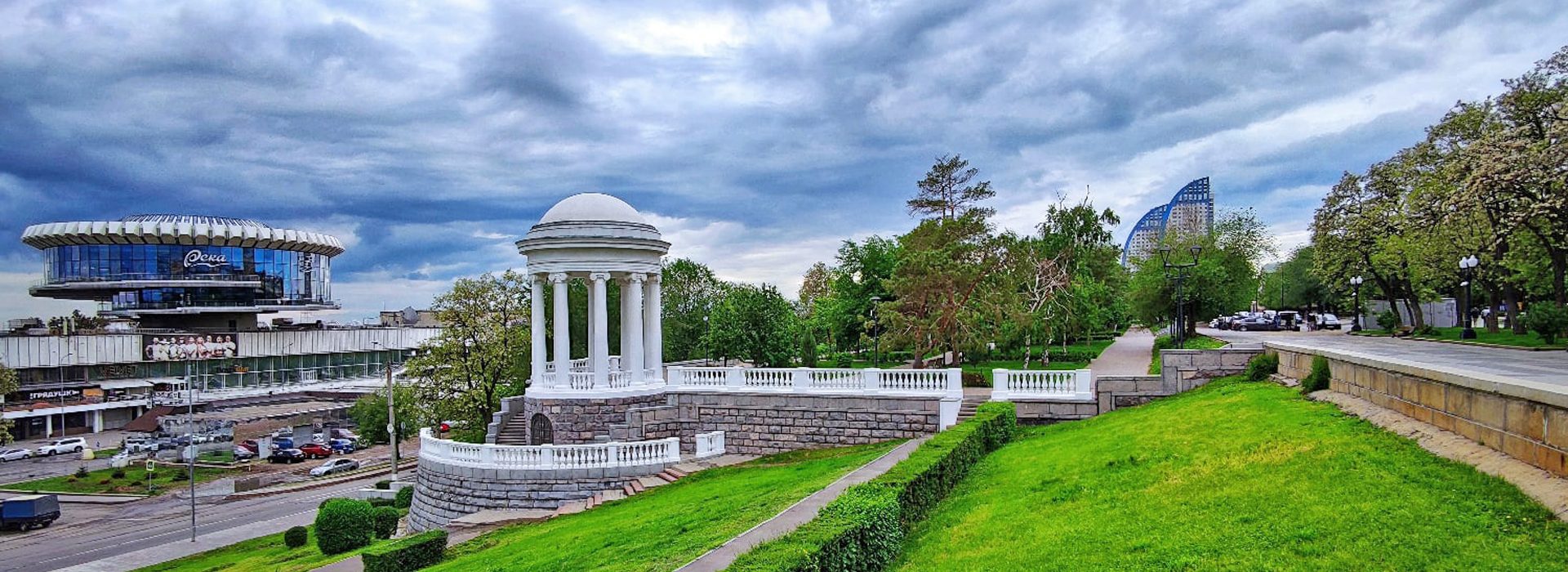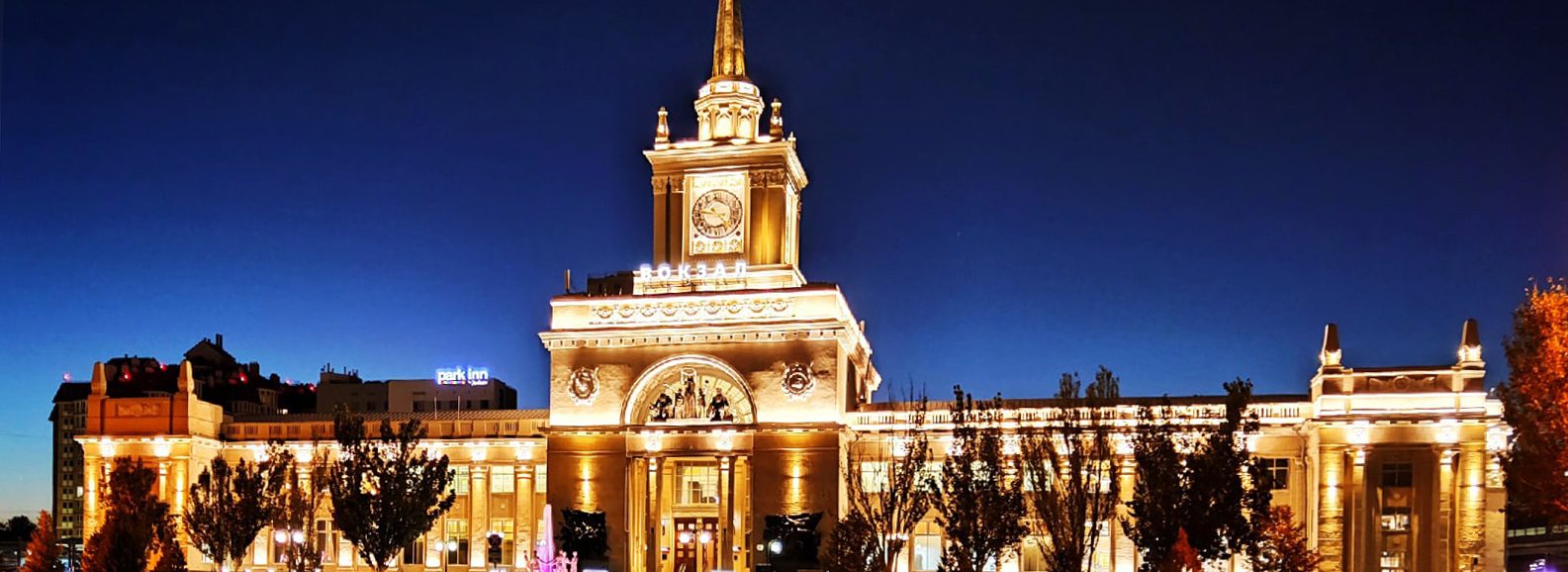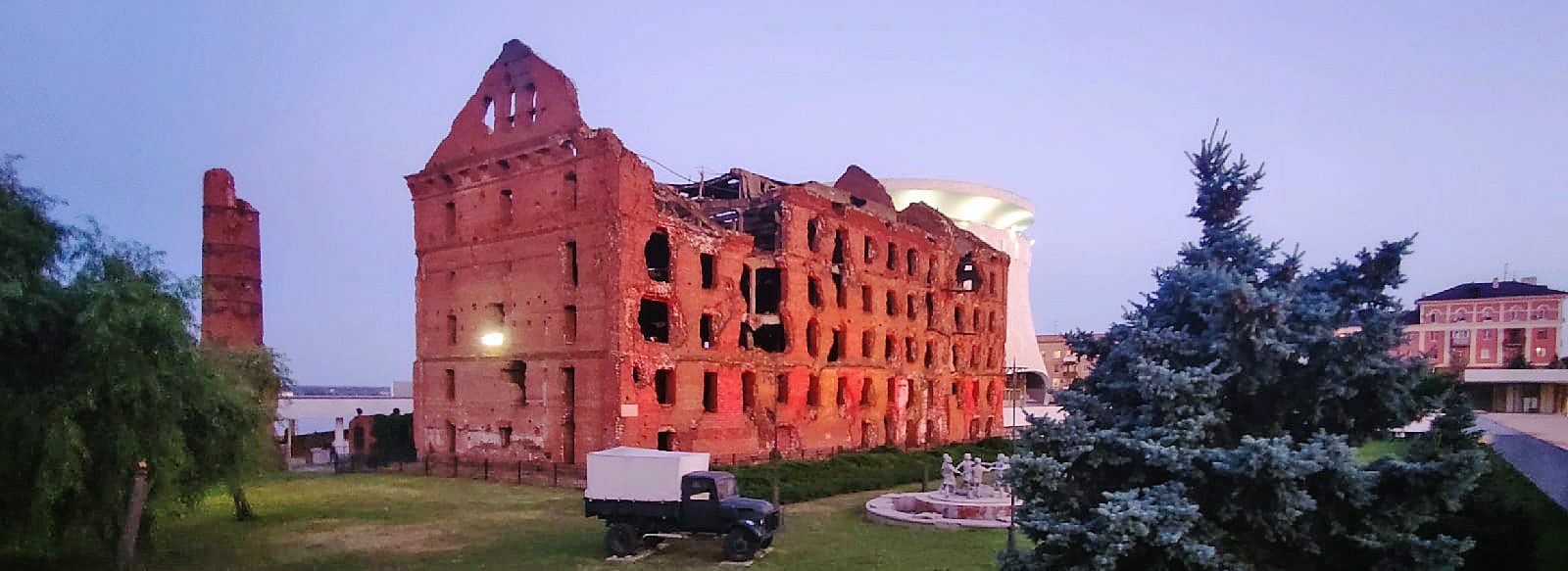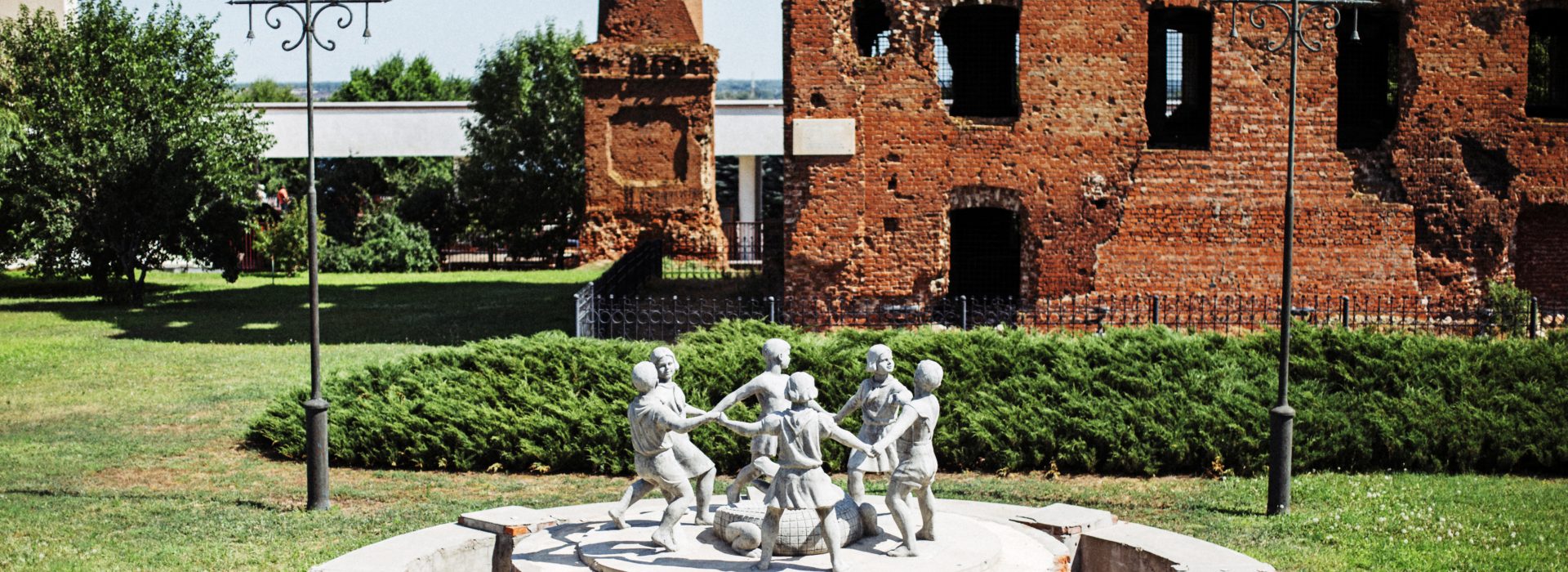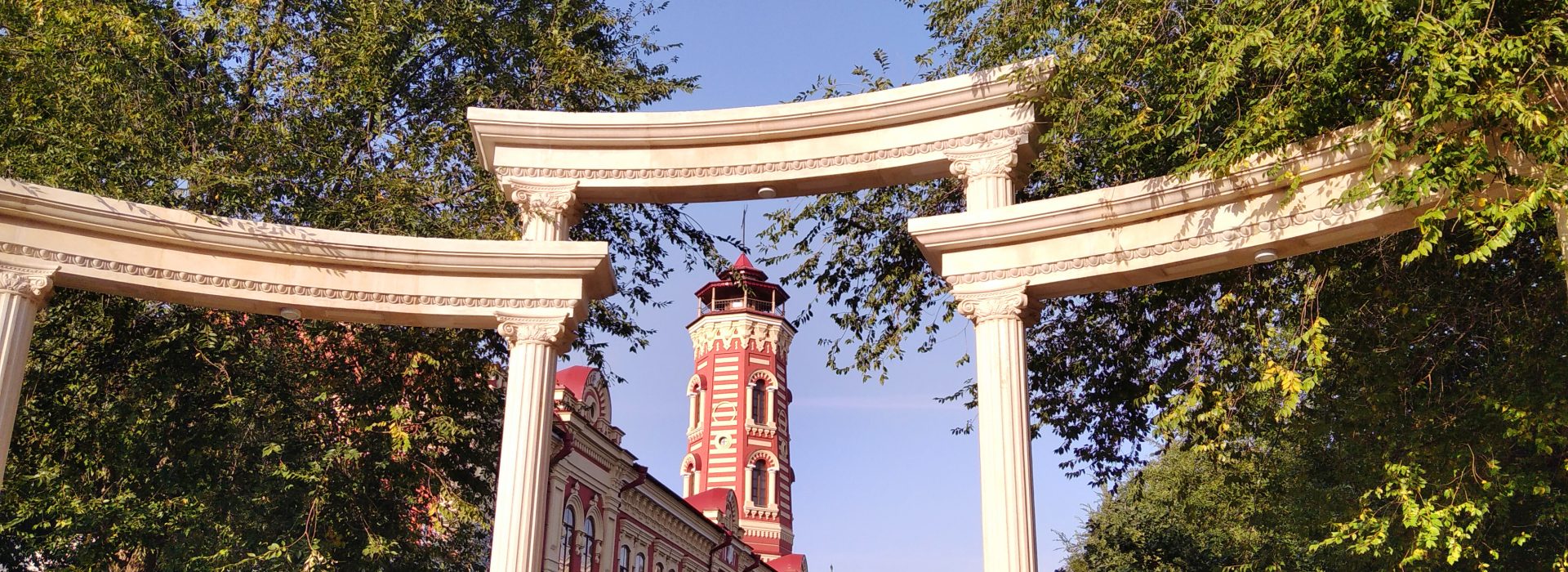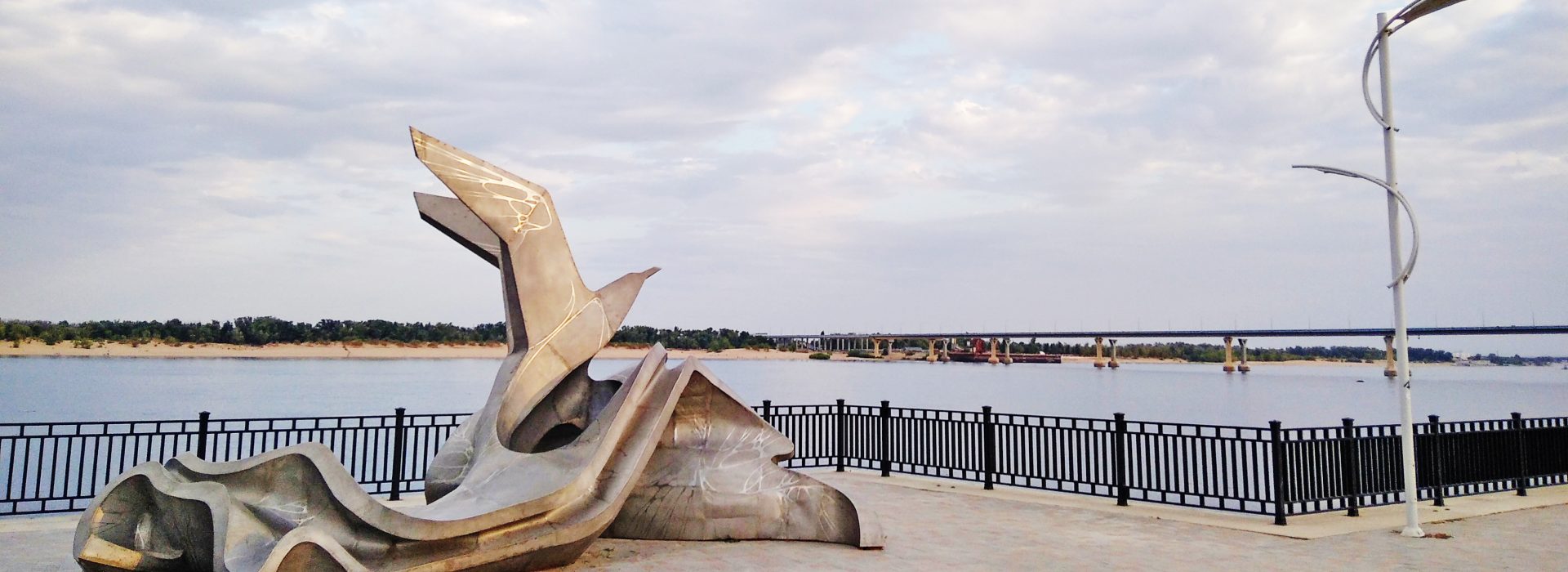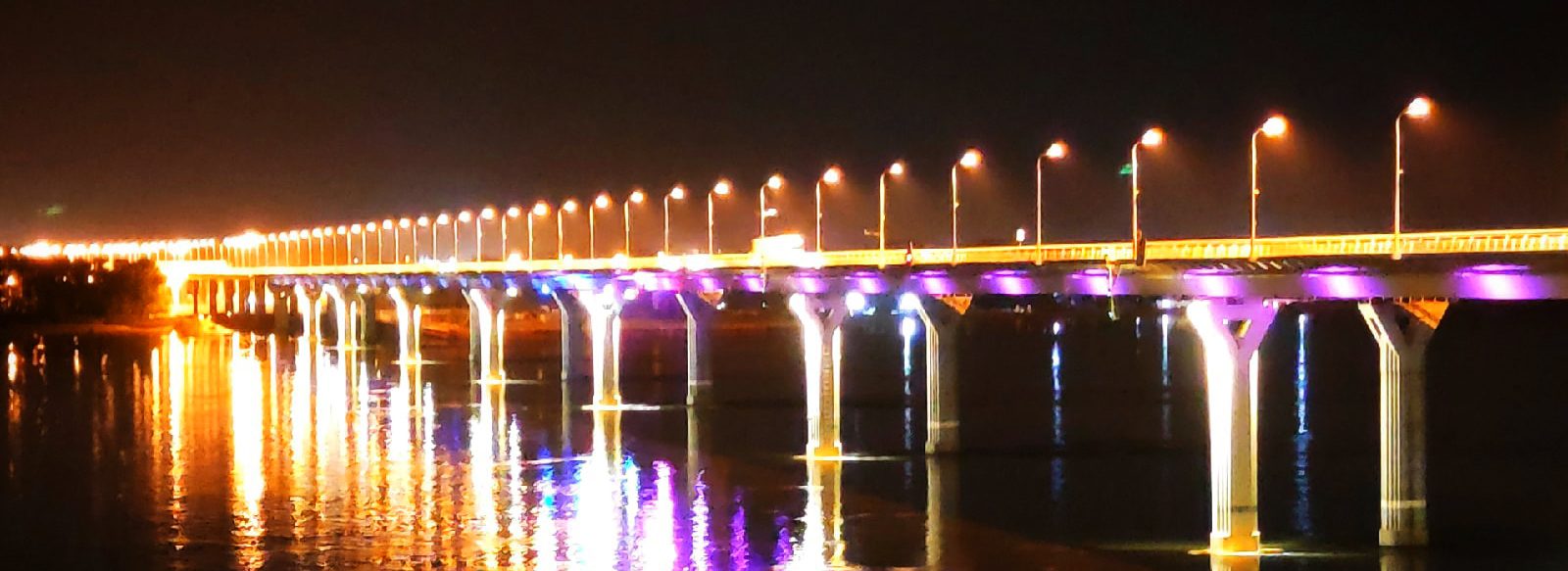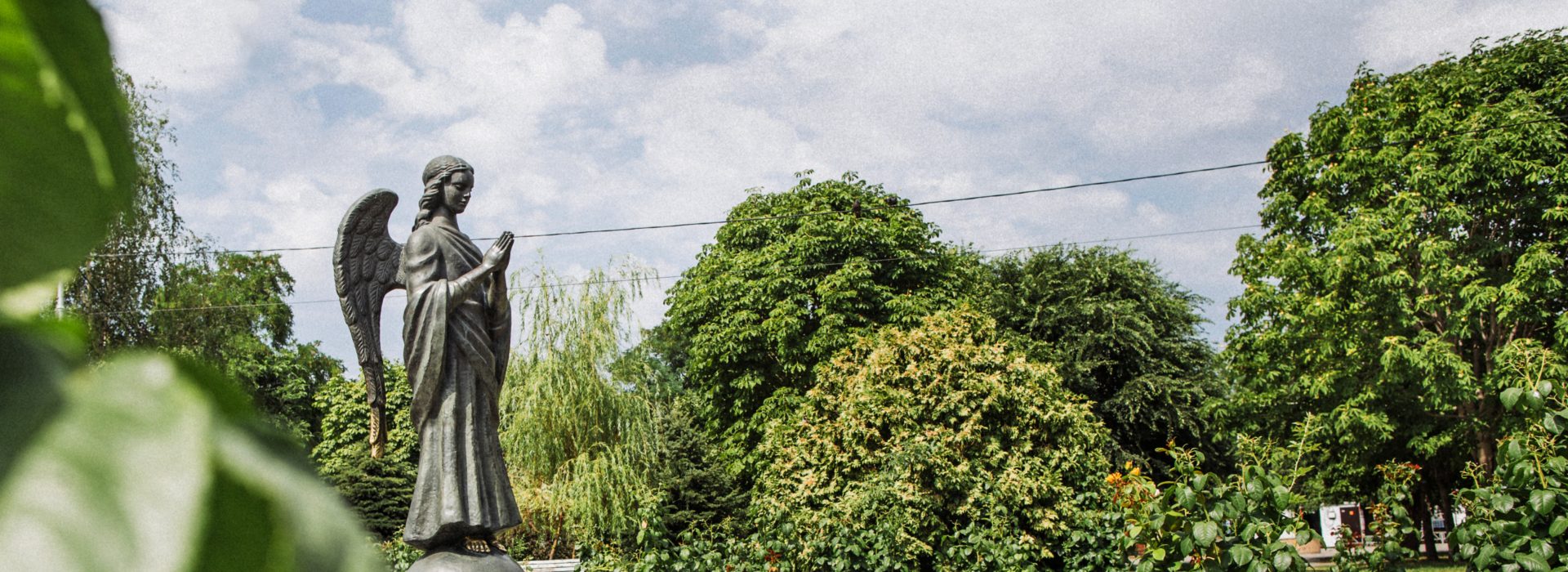Улица им. Ф. Э. Дзержинского
Остановки: 3-я школа, Тракторный завод
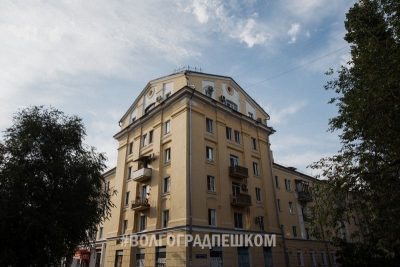 Из-за концентрации зданий советской стилистики Волгоград называют самым советским городом России.
Из-за концентрации зданий советской стилистики Волгоград называют самым советским городом России.
Плотность образцов архитектуры довоенной и первой послевоенной поры создают уникальную атмосферу прошлого столетия. Здания в стиле конструктивизма 1930-х годов и «сталинского ампира» 1950-х годов на территории Верхнего и Нижнего Тракторного — часть Соцгородка, сложившегося вокруг Тракторного завода (СТЗ). Эстетический облик Соцгородка СТЗ тесно был связан с идеологической содержательностью. Он разительно отличался современностью архитектурных решений от центра Сталинграда, где новые здания соседствовали с бывшими купеческими особняками.
Хотя на карте современного Волгограда не найти упоминаний о Соцгородке, знакомство с ним возможно.
Например, мы можем совершить прогулки по улицам Тракторозаводского района, которые исторически берут свое начало от заводских проходных.
Центральные проходные завода и площадь перед ней также можно назвать комплексом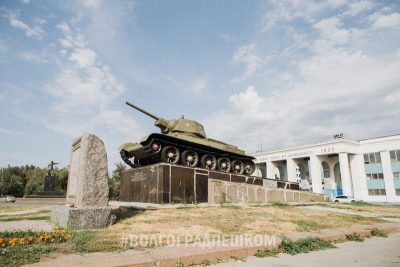 достопримечательностей. Мозаичные панно, памятник Т-34, гранитная стела, скульптура защитника Сталинграда — появились на площади имени Феликса Эдмундовича Дзержинского (1877—1926) много позже скульптурного воплощения революционера.
достопримечательностей. Мозаичные панно, памятник Т-34, гранитная стела, скульптура защитника Сталинграда — появились на площади имени Феликса Эдмундовича Дзержинского (1877—1926) много позже скульптурного воплощения революционера.
Один из четырех довоенных исторических памятников, сохранившаяся после Сталинградской битвы, — скульптура Ф. Э. 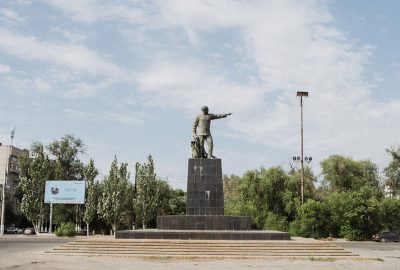 Дзержинского. Изначально перед центральной проходной завода в 1932 году была установлена временная модель, а 17 июня 1935 года ее заменил бронзовый памятник революционера. Высота скульптуры — 4,3 метров, постамента — 6,48 метров. Автор проекта — скульптор–монументалист Сергей Дмитриевич Меркуров (1881—1952).
Дзержинского. Изначально перед центральной проходной завода в 1932 году была установлена временная модель, а 17 июня 1935 года ее заменил бронзовый памятник революционера. Высота скульптуры — 4,3 метров, постамента — 6,48 метров. Автор проекта — скульптор–монументалист Сергей Дмитриевич Меркуров (1881—1952).
Улица имени Ф. Э. Дзержинского — самая протяженная пешеходная улица Волгограда, пересекающаяся с другими улицами, имеющими транспортное движение. С 1970-х годов улица преобразована в пешеходную. Дважды ее пересекают улицы, названные именами наших земляков, Героев Советского Союза Павла Шурухина и Ивана Мещерякова. Пешеходная часть этой улицы имеет длину свыше 1 километра и ширину 50 метров. Есть еще одна интересная особенность улицы: на ней расположены три площади: Дзержинского, перед киноцентром «Ударник» и перед Дворцом культуры Алюминиевого завода. Образующие улицу здания — яркий пример уникального облика бывшего Соцгородка СТЗ.
Путешествуя по этой улице, мы можем увидеть здания, чей облик сильно отличается от современной архитектуры. На них можно увидеть декоративные пояски, обрамления окон, лепные детали, включая ограждения крыш в виде оградки из балясинок, имитирующих традиционную систему ручной обработки камня.
______________________________________________________________________________________________________
Dzerzhinsky street
Stops: The School #3, Traktornyy zavod
 Due to the concentration of Soviet-style buildings, Volgograd is called the most Soviet city in Russia.
Due to the concentration of Soviet-style buildings, Volgograd is called the most Soviet city in Russia.
The density of samples of architecture of the pre-war and first post-war period creates a unique atmosphere of the last century. Buildings in the constructivism style of the 1930s and the «Stalinist Empire» of the 1950s on the territory of the Upper and Lower Tractor — part of the Sotsgorodok, formed around the Tractor Plant (STZ). The aesthetic appearance of the Sotsgorodok STZ was closely related to the ideological content. It was strikingly different in its modern architectural solutions from the center of Stalingrad, where new buildings were adjacent to former merchant mansions.
Although there is no mention of Sotsgorodok on the map of modern Volgograd, acquaintance with it is possible.
As an example, we can take walks along the streets of the Traktorozavodsky district, which historically originate from the factory checkpoints.
The central checkpoints of the plant and the square in front of it can also be called a complex  of attractions. Mosaic panels, a T-34 monument, a granite stele, a sculpture of the defender of Stalingrad — appeared on the square named after Felix Edmundovich Dzerzhinsky (1877-1926) much later than the sculptural embodiment of the revolutionary.
of attractions. Mosaic panels, a T-34 monument, a granite stele, a sculpture of the defender of Stalingrad — appeared on the square named after Felix Edmundovich Dzerzhinsky (1877-1926) much later than the sculptural embodiment of the revolutionary.
One of the four pre-war historical monuments preserved after the Battle of Stalingrad is the sculpture by F.E. Dzerzhinsky. Initially, a temporary model was installed in front of the central entrance of the plant in 1932, and on June 17, 1935 it was replaced by a bronze monument to the revolutionary. The height of the sculpture is 4.3 meters, the pedestal is 6.48 meters. The author of the project is the sculptor-monumentalist Sergei Dmitrievich Merkurov (1881-1952).
Dzerzhinsky. Initially, a temporary model was installed in front of the central entrance of the plant in 1932, and on June 17, 1935 it was replaced by a bronze monument to the revolutionary. The height of the sculpture is 4.3 meters, the pedestal is 6.48 meters. The author of the project is the sculptor-monumentalist Sergei Dmitrievich Merkurov (1881-1952).
The street named after F.E.Dzerzhinsky is the longest pedestrian street in Volgograd, intersecting with other streets with traffic. Since the 1970s, the street has been transformed into a pedestrian street. Twice it is crossed by streets named after our fellow countrymen, Heroes of the Soviet Union Pavel Shurukhin and Ivan Meshcheryakov. The pedestrian part of this street is over 1 kilometer long and 50 meters wide. There is one more interesting feature of the street: there are three squares on it: Dzerzhinsky, in front of the Udarnik cinema and in front of the Palace of Culture of the Aluminum Plant. The buildings forming the street are a vivid example of the unique appearance of the former Sotsgorodok STZ.
Traveling along this street, we can see buildings which are very different from the modern architecture. You can see decorative belts, window frames, stucco details, including roof railing in the form of balusters, imitating the traditional system of manual stone processing.
